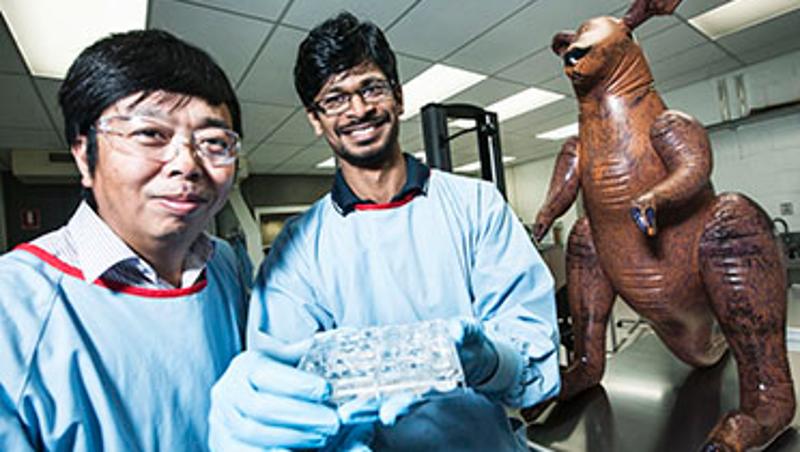
Humans and kangaroos share knees and shoulders that are subjected to different loadings and stresses thanks to being bipedal, and this similarity is being used by QUT scientists to study kangaroo shoulder cartilage with the aim of improving implants for worn out joints.
Professor Yuantong Gu, from QUT's Science and Engineering Faculty, is leading research into the complex, little studied make-up of shoulder cartilage.
"When it comes to cartilage, the tissue that absorbs impact and facilitates movement between major joints, most research focus had been on the cartilage in the knee," Professor Gu said.
"We are studying kangaroo shoulder cartilage as a proxy for human cartilage because kangaroos are a similar-sized biped (two-footed) with shoulder joints similar to humans."
QUT PhD student Namal Thibbotuwawa who is working with Professor Gu's research has made two important discoveries.
"My research has found firstly that knee and shoulder cartilage are very different and that kangaroo shoulder cartilage is a suitable analogue for human cartilage," Mr Thibbotuwawa.
"While kangaroos use their arms for grabbing, punching and lifting as we do, humans have a much greater range of movement.
"The differences we detected in the biomechanics of shoulder and knee joint cartilage are due to shoulders not having to support body weight.
"Their function is much different from the weight-bearing knee. Knees are regularly loaded in compression while shoulders are irregularly and randomly loaded and are not required to be able to respond to much compression load."
Professor Gu said the research aimed to increase understanding of the components of shoulder cartilage so that better implants could be made to relieve the pain of cartilage that's been worn out by age, arthritis or injury.
"Cartilage is a complex tissue with a number of key components - we need to find out what their roles and properties are and then we can try to replicate them.
"We want to provide the fundamental knowledge needed to develop artificial implants with enhanced biomechanical properties to relieve the pain of degraded shoulder joints and restore mobility."
Media contact: Niki Widdowson, QUT media, 07 3138 2999 or n.widdowson@qut.edu.au


